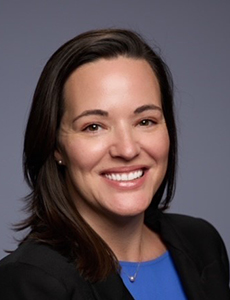Three Benefits and Three Challenges of Implementing AI in Claims Management

Insurance carriers and TPAs are increasingly looking to artificial intelligence to enhance their claims management efficiency and fraud-detection efforts.
AI has the power to collect, organize and analyze claims data in a fraction of the time it would take an adjuster. It can also spot red flags and identify patterns suggestive of fraud. These applications promise to hasten claim resolution, save costs and improve both client and adjuster satisfaction.
But as technology advances, there remains much work to be done in understanding and implementing AI and effectively reaping the benefits it has to offer.
Here’s how carriers and claims handlers are using AI in their claims management processes today — and the barriers they face going forward.
Current Uses of AI in Claims
1) Data Collection, Organization and Analysis
Claims submissions may include dozens if not hundreds of documents, including photos, medical reports, legal documents, police reports et cetera.
“Where AI can really be helpful is allowing claims teams [to] better digest, analyze and track information,” said Marc Rothchild, senior vice president and head of claims and Xceedance.
This is done mostly using optical character recognition, the most reliable technology used for processing structured documentation. By pulling out key information from lengthy documents, OCR helps adjusters triage claims and determine which may demand more of their attention and expertise.
“This is useful not just for purposes of fraud detection. It means you can designate claims of low fraud potential as well and keep them moving so you don’t slow down their processing or ultimate payout, which ultimately benefits the claimant and policyholder,” Rothchild said.
This also facilitates automated claims processing — from submission to payout — for straightforward claims such as those for pure physical damage.
2) Streamlining Communication
AI-driven communication tools — ChatGPT being one example — can significantly reduce the amount of time adjusters spend on back-and-forth with claimants and other involved parties.
“So much of an adjuster’s time is wrapped up in communication with multiple parties. AI has the potential to automate most of the incoming and outgoing communication — SMS, emails, even phone calls — especially for less complex requests like sharing claim status or providing payment information,” Rothchild said.
Automated tools also keep a clean centralized record of all that communication. This frees up the adjuster’s time to dive into the details of more complicated claims, bring the right resources to bear and ultimately move claims in the right direction faster.
“Most organizations rely on multiple systems, including a core claims management system, and a separate documentation system and an email platform. I think the biggest advantage of AI in the fraud space is going to be its ability to identify patterns where historically we had to get hit hard before we started to see patterns in fraud behavior,” said Rothchild.
“AI coupled with a claim system like the one we invested in — which automates all inbound and outbound communication and has its own embedded document management platform, where you get insights into every inbound and outbound document and communication — could really springboard the ability to locate patterns not only in claim trends but in actual behavior of those committing fraud,” Rothchild added.
3) Spotting Suspicious Submissions
At least 10% of all commercial insurance claims are fraudulent, costing the U.S. insurance industry $308.6 billion annually.
Because of its ability to process massive amounts of data quickly and learn patterns over time, AI can spot red flags indicative of potential fraud.
“AI can cross-reference IP addresses to detect if multiple unrelated parties are using the same IP address for different policy or claim activities. For auto claims, it can cross-reference the VIN against lots of publicly available data sets to find any history of theft or salvage. It can also flag inconsistencies in how a claimant reports their identity, including different Social Security numbers, dates of birth, addresses or phone numbers,” Rothchild said.
AI platforms also analyze the metadata attached to submitted images or documents to determine the exact geolocation of where that document was created. This may help to identify completely fabricated images or “deepfakes.”
The Limitations
1) Data Availability and Ownership
Machine learning platforms need large amounts of data in order to keep learning and improve accuracy and reliability over time. In addition to claims data, insurers have access to databases like ISO and other government data sets. But the potential pool of information is much larger than that. Historically, data transparency and ownership have been barriers in the insurance industry.
“In all industries, data ownership can be an issue, but insurance is even harder. There are lots of common data sources out there, but the difficulty lies in how quickly you can get access to that data and whether that data is updated in a timely manner. If you want to get claims processed quickly — sometimes in a matter of hours — it’s not always possible,” Rothchild said.
Claims systems also still rely heavily on manual data inputs. Interconnectivity of platforms and open data-sharing are key in order for data processing tools to do their job effectively and minimize the human touch needed to make everything work.
“That’s a scenario where AI could be more powerful — pulling in and processing large volumes of data in near-real time,” Rothchild said. Hashing out the rules around data ownership, access and protection will likely continue to be a challenge for insurers going forward.
2) Data Science Expertise
The insurance industry is facing a talent crunch. According to the U.S. Bureau of Labor Statistics, the industry could lose 400,000 workers through attrition by 2026. Of particular concern is the shortage of technology and data science talent. A global Workday study found that only 41% of surveyed insurance execs believe their organization has the skills to keep pace with emerging finance technology.
“It’s a challenge to attract the best tech and data talent, because the insurance industry is competing against top tech players like Amazon, Meta, Microsoft et cetera. Even insurers that make significant investment in building a data science team face the challenge of upskilling that talent with an understanding of claims processes,” Rothchild said. “There is a learning curve to understand the nuances of claims handling.”
Rothchild said carriers and claims organizations will need to be creative in how they source technology talent and focus on amping up their training.
“People get passionate about new uses of technology, and there is opportunity to tap into that. Align with universities and get data science professionals trained early on. Build up your training resources. Show that there is a good career path available in the industry,” he said.
3) Keeping the Human Element
Despite the advantages offered by AI, Rothchild is quick to point out that it should remain a tool used by experienced claims handlers, not a replacement for them.
When it comes to the application of AI for fraud detection, for example, “you can’t solely rely on that red flag indicator. You put trust in the adjuster to dig deeper and use their judgement to determine what warrants investigation and what doesn’t. That decision should be driven by a combo of technology and human expertise and judgement,” he said.
“AI ideally will be the helper, or the gut-check, but not the ultimate decision-maker.”
This underscores the need to couple investment in technology with continual training in claims management and best practices, especially for data science talent who may not come with an insurance background. &












